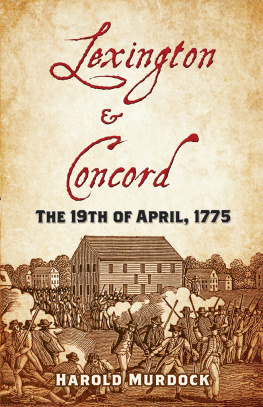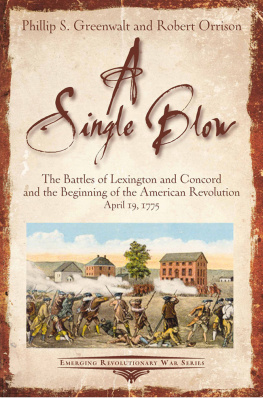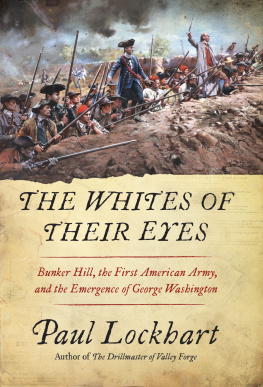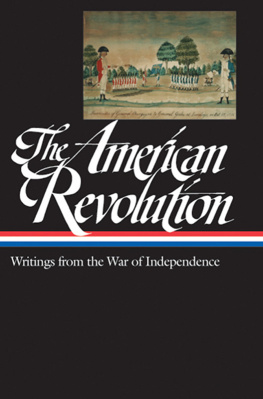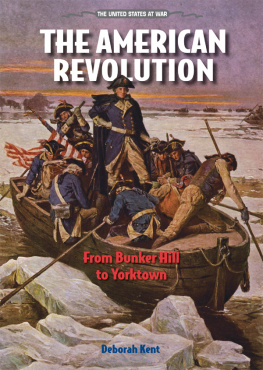Copyright 2014 by Walter R. Borneman
Author photograph by Fall River Productions, Inc.
Cover 2014 Hachette Book Group, Inc.
All rights reserved. In accordance with the U.S. Copyright Act of 1976, the scanning, uploading, and electronic sharing of any part of this book without the permission of the publisher constitute unlawful piracy and theft of the authors intellectual property. If you would like to use material from the book (other than for review purposes), prior written permission must be obtained by contacting the publisher at permissions@hbgusa.com. Thank you for your support of the authors rights.
The Hachette Speakers Bureau provides a wide range of authors for speaking events. To find out more, go to www.hachettespeakersbureau.com or call (866) 376-6591.
The publisher is not responsible for websites (or their content) that are not owned by the publisher.
Praise for Walter R. Bornemans
AMERICAN SPRING
Likely to be one of the enduring accounts of the opening of the American Revolution. Loaded with intriguing details, sort of historical nonpareil candies sprinkled throughout the account. A pleasing marriage of scholarly research and approachable language.
David Shribman, Boston Globe
Walter Borneman has written an engaging and illuminating account of some of the most critical weeks in American history. Here is how it all began.
Jon Meacham, author of Thomas Jefferson: The Art of Power
Borneman delivers a gripping, almost moment-by-moment account of the nasty exchanges and bloody retreat of British troops followed by hundreds and then thousands of militia who camped around Boston and laid siege. A first-rate contribution.
Kirkus Reviews (starred review)
An exceptionally detailed account of the first six months of 1775. A balanced and thorough narrative.
Douglas King, Library Journal
Bornemans approach gives the reader not just a comprehensive understanding of the rebels motives, obstacles, and overall tensions, but also makes the setting of the colonies during the spring of 1775 vivid and real to a twenty-first-century audience. An enjoyable and accessible read.
Publishers Weekly
An excellent history of the origins of the American Revolution.
Army magazine
Walter R. Bornemans superb American Spring: Lexington, Concord, and the Road to Revolution tells the story of that period in significant detail with descriptions of military engagements and legislative actions, but never loses sight of the personalities at all levels. To a great extent, Borneman relies on the original affidavits, correspondence, and memories of the participants and views events from their perspectivebefore they knew what the outcome would begiving us a remarkably fresh look at this transformative period. Bornemans authoritative, carefully structured, and very well-written account often seems to place readers in the moment with events that changed the course of history.
Roger Bishop, BookPage
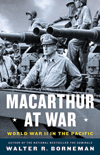
MacArthur at War
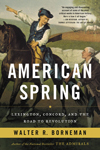
American Spring

The Admirals
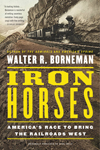
Iron Horses
Polk: The Man Who Transformed the Presidency and America
The French and Indian War: Deciding the Fate of North America
14,000 Feet: A Celebration of Colorados Highest Mountains (with Todd Caudle)
1812: The War That Forged a Nation
Alaska: Saga of a Bold Land
A Climbing Guide to Colorados Fourteeners (with Lyndon J. Lampert)
Once again for Marlene

Chapter 1. British North America, 1775,
Chapter 1. Boston and Vicinity, 1775,
Chapter 5. Salem and the Route of Colonel Leslies Raid,
Chapter 9. Routes to Concord,
Chapter 10. Lexington Green,
Chapter 11. Concord and North Bridge,
Chapter 13. Battle Road,
Chapter 18. Attack on Fort Ticonderoga,
Chapter 20. Battles of Grape and Noddles Islands,
Chapter 23. Battle of Bunker Hill,

P resent! Red-coated British regulars in precise formation level their muskets across the expanse of green grass. Fifty yards to their front, colonials in dark homespun wait with a mixture of trepidation and resolve. How has it come to this? Several late arrivals, muskets in hand, run, panting, to join the ragged line of locals. As they do so, a shrill command fills the morning air from behind the Redcoat ranks. Fire! A thundering retort rings out. The line of leveled muskets disappears in a cloud of white smoke, and the smell of gunpowder quickly wafts across the field.
Among the local militia, several men are down, blood oozing from their garments. Others are moving toward the shelter of adjacent buildings and a nearby stand of trees. But most of the militiamen stand their ground and dare to return firea cacophony of sporadic shots that crisscross the field in front of them. Into this void, the British regulars move forward at the quickstep with glistening bayonets fixed. In seconds, they will sweep the militiamen before them.
Then, from the crowd of spectators gathered around, come the sounds of cameras clicking and a chorus of oohs and aahs. And it is over. The regulars halt their advance, and a cheer goes up from both sides. The wounded effortlessly rise to their feet. Hats and caps are doffed on both sides, and handshakes all around are the order of the day.
O N THE THIRD M ONDAY OF every April, the people of the Commonwealth of Massachusetts celebrate. Around the towns of Lexington and Concord and in between, along what is called Battle Road, the sounds of fifes and drums and the rattle of reenactors muskets fill the spring air. Individuals in period costumes tell stories, march in military formations, and pose for photographs. Tour buses line the routes to Lexington Green and Concords North Bridge, and parking spots of any size are highly prized for miles in every direction. Down the road in Boston, the annual marathon is under way. The Patriots are a football team, Samuel Adams is a beer, and John Hancock is an insurance company.


